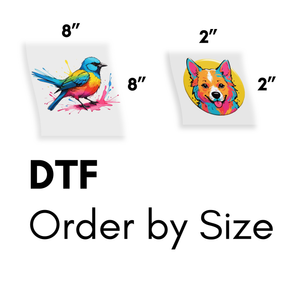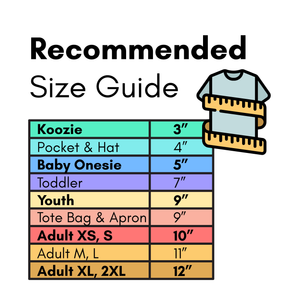Best Shirts for Transfers – Ultimate Guide for Perfect Prints
Direct-to-Film (DTF) printing has revolutionized custom apparel production. Selecting the right shirt ensures vibrant, durable, and long-lasting designs. The correct fabric enhances ink adhesion and overall print quality. This guide explains the Best Shirts For Transfers, fabric types, and techniques for professional DTF results.
What Makes a Ideal for Best Shirts For Transfers?
The ideal shirt has a smooth surface and consistent texture. Uneven fibers may cause incomplete ink adhesion.
Shirts should also withstand heat pressing without shrinking or warping. Cotton, polyester, and blends are commonly recommended.
Choosing the correct shirt, or the Best Shirts For Transfers, reduces print defects and improves customer satisfaction.
For more information on DTF printing, visit Wikipedia - Direct-to-Film Printing.
Cotton Shirts
Cotton is soft, breathable, and widely available. It absorbs heat well, making it suitable for DTF transfers.
100% cotton shirts offer excellent ink adhesion and vibrant colors.
However, pre-shrunk cotton is preferable to avoid size changes after heat pressing.
Blended cotton can also be used if mixed with polyester for added durability.
Polyester Shirts
Polyester shirts are durable and resistant to wrinkles. They hold up well in high-heat press settings.
While polyester requires special ink considerations, DTF printing works effectively with proper techniques.
Lightweight polyester shirts are ideal for sportswear and promotional items.
Polyester blends can balance comfort and print durability.
Cotton-Polyester Blends
Blends combine the best of cotton and polyester. They are soft, durable, and ideal for detailed DTF designs.
Common ratios like 65% polyester and 35% cotton ensure color vibrancy and fabric stability.
Blended shirts often resist shrinking while maintaining ink adhesion for long-lasting prints.
This makes them a popular choice for both casual wear and commercial merchandise.
Shirt Weight and Fabric Texture
Heavier fabrics generally handle heat press better but may require longer pressing times.
Smooth fabrics produce sharper designs with crisp edges. Rough or textured fabrics can cause uneven transfers.
Lightweight shirts are easier for bulk production and reduce overall heat press wear.
Always test small batches to determine the best pressing settings for each shirt type.
Color Considerations
DTF transfers work on both light and dark shirts. Dark fabrics require higher opacity films for vibrant designs.
White or light shirts often show color accurately without extra preparation.
Contrast between shirt color and transfer enhances the final design.
Testing color combinations ensures that designs match the desired output.
Shirt Fit and Style
The style of the shirt also impacts printing. Crew necks and V-necks are common choices for DTF transfers.
Avoid seams or textured areas where designs will be applied.
Short sleeves, long sleeves, hoodies, and tank tops all work if fabric quality is maintained.
Proper fit ensures the design appears centered and professional.
Caring for DTF-Printed Shirts
Proper care extends the life of prints. Wash shirts inside out in cold water to protect the design.
Avoid bleach, harsh detergents, or fabric softeners.
Tumble dry on low or hang dry to prevent cracking.
Do not iron directly on the print; use a protective cloth if needed.
Recommended Suppliers for Shirts
Quality shirts enhance the overall DTF experience. Trusted suppliers offer fabrics tested for heat tolerance and ink adhesion.
DTF Print House provides high-quality shirts suitable for various DTF projects.
They also offer DTF films, inks, and transfers to ensure a complete professional setup.
Common Mistakes to Avoid
Using low-quality shirts can ruin prints and reduce customer satisfaction.
Avoid shirts that shrink excessively after heat pressing.
Do not use textured fabrics that can interfere with ink adhesion.
Always test new shirts with your DTF printer before mass production.
Bulk Production Tips
When printing large quantities, pre-wash shirts to remove sizing or finishes that interfere with ink adhesion.
Use consistent heat press settings to maintain uniformity across all shirts.
Organize shirts by color and fabric type for faster workflow.
Track inventory and testing results to improve future production runs.
Trending Styles for DTF Transfers
Popular shirt styles include graphic tees, sports jerseys, hoodies, and crop tops.
DTF printing allows bold, full-color designs that appeal to fashion-conscious customers.
Custom designs for events, schools, or brands benefit from high-quality shirts.
Experimenting with new styles attracts more customers and increases repeat orders.
Environmental Considerations
Some shirts are made with eco-friendly fabrics like organic cotton or recycled polyester.
Combining these shirts with sustainable DTF inks and films reduces environmental impact.
Eco-conscious choices appeal to customers and support long-term sustainability in printing.
Final Thoughts
Selecting the Best Shirts For Transfers ensures vibrant, durable, and professional results.
Focus on fabric type, weight, color, and texture to maximize print quality.
Investing in high-quality shirts and supplies improves efficiency and customer satisfaction.
Testing and proper heat press techniques complete the process for perfect designs every time.
✅ Internal Link:
For premium shirts and professional Best Shirts For Transfers, check DTF Print House.

 Vendor:DTF Print House
Vendor:DTF Print House
 Vendor:Teeland
Vendor:Teeland






